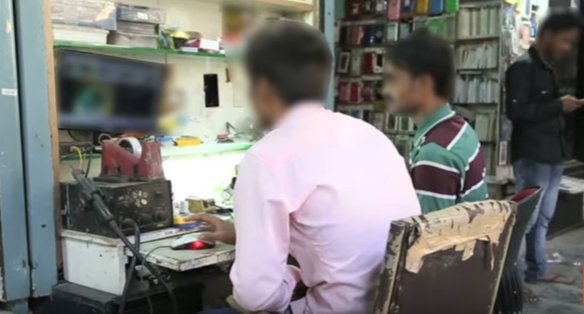It was a routine visit to one of the many women’s self-help groups that filmmaker-activist Madhureeta Anand works with. After wrapping up a meeting, Anand started talking with some of the women working with the organisation.
“They looked troubled. They wanted me to talk to one of their male co-workers,” Anand says.
Apparently, the co-worker in question had developed an unhealthy addiction to violent porn. This made his female co-workers distinctly uncomfortable.
“They claimed that his behaviour had changed drastically in these few months. They were not comfortable with the way he looked at them,” Anand says.
The incident, she claims, acted as a trigger. Anand, who made a film on female foeticide titled Kajarya in 2015, decided she would do something to initiate a discussion around pornography in India. The result is a non-fiction web series titled “Know Your Porn” which explores aspects of the country’s very high consumption of pornography.
According to a recent Pornhub survey , India is the fourth largest consumer of porn in the world.
“The sheer proliferation is mind-boggling. Today, men and women in every village of the country can access porn if they have a smart phone. In most cases porn clips are circulated through Whatsapp and other messaging platforms,” Anand says.
She says her research took her to the underbelly of the Capital.
“I talked to a lot of men about their sexuality. And most men and boys, even those barely out of school, talked about the way porn influenced their idea of sex. Some felt that they felt like raping women after watching rape porn,” Anand says.
The series focuses on men
“It doesn’t take a rocket scientist to figure out that men are more empowered to make informed choices in our country. Even if he is a carpenter watching sex clips in his mobile phone he is more likely to own the smartphone than his wife anyway,” Anand says.

Anand says she wants men to make informed choices so that “women are harassed less”.
She also feels addiction to porn is giving people unrealistic expectations about what to expect from sex, and in some cases, leading to demands of replicating staged acts.
Good porn, bad porn
The idea is to help the Indian consumer distinguish reality from fantasy. With the series, Anand also plans to address questions like:
- Is pornography legal in India?
- Is the sex you see in pornography real sex or just something manufactured?
- What is porn addiction?
- Why you should choose your porn and not watch child pornography or highly violent porn?
- Is pornography disempowering both men and women?
“I want the Indian man, who is watch porn discreetly in his phone, to realise that what he might be watching might be illegal and unethical. I want him to have that realisation, without anyone telling him so,” Anand says.
Where will we get these videos?
These will be short videos that can be easily shared through a platform like WhatsApp, which is said to be contributing to the proliferation of pornography in the country.
The series will be distributed through multiple channels — via organisations like Men Engage, Azad Foundation and Centre for Health and Social Justice; on YouTube, on WhatsApp groups that usually circulate pornographic material and by showing it in colleges and educational institutions.
The makers will also offer it to anyone who wants to hold talks and meetings with men to discuss pornography.
Why the series needed to be made
Anand says it is troubling that Indian porn consumers have jumped from watching films in seedy cinema halls to having easy access to a plethora of material on their smartphones in the span of a decade.

“It’s like a ticking bomb. We have no filter to tell us this is good or this is bad. Which is why there is this trend of revenge porn in UP. In Punjab, it seems, child pornography is really popular,” Anand says.
Banning porn not a solution
“I firmly believe that banning porn is not a solution. Porn addiction is like alcohol addiction. The onus is on the consumer to realise that what they are watching is screwing with their mind,” Anand says.
The solution lies in reaching out to the consumer, she insists.
“I am invited to give talks on sexuality in colleges but authorities as me to refrain from using the word porn. We need to reach out to the consumer. We need to normalise porn. We need to tell consumers that they are not freaks,” Anand says.
All pics sourced from Wishberry

















